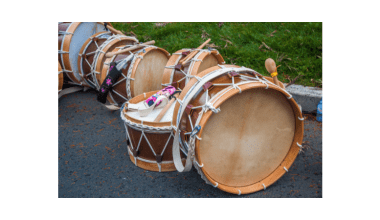Joining songs is a skill that elevates music listening, DJing, and creating soundtracks. Whether you’re combining tracks for a playlist, mixing music for an event, or creating original remixes, knowing how to join songs is essential. With the right tools and techniques, you can merge music seamlessly, delivering a professional, cohesive result.
This blog will cover everything you need to know about joining songs. From beginner-friendly methods to advanced mixing tips, you’ll learn how to combine tracks like a pro.
Why Learn to Join Songs?
Joining songs is more than just placing two tracks together. It’s about creating harmony and flow. Here are some reasons to learn this skill:
- For Playlists: Make seamless transitions between tracks in playlists for uninterrupted listening.
- For Events: DJs and event organizers use song joining techniques to keep the crowd energized.
- For Creativity: Combine different genres or create mashups for unique musical expressions.
- For Content Creation: Background music for videos, podcasts, or ads often requires song merging.
Whether you’re a hobbyist or a professional, joining songs can open new creative possibilities.
Understanding the Basics of Joining Songs
Joining songs involves merging two or more audio tracks into a single file. To achieve a smooth blend, it’s crucial to:
- Match Tempos: Ensure the beats per minute (BPM) of both songs align.
- Blend Keys: Combine tracks in compatible keys to maintain harmony.
- Fade Transitions: Use fading effects to create smooth transitions.
With these elements in mind, you can start exploring different methods to join songs.
Tools to Join Songs
Several tools make joining songs simple and efficient. Here are some popular options:
1. Audacity
- Why Use It: A free, open-source audio editor with powerful features.
- Features: Cut, trim, fade, and mix tracks easily.
- Best For: Beginners and intermediate users.
2. GarageBand
- Why Use It: Intuitive interface for Apple users.
- Features: Multi-track editing, effects, and mixing tools.
- Best For: Mac and iOS users creating music.
3. Adobe Audition
- Why Use It: Professional-grade software for advanced editing.
- Features: Precise mixing, noise reduction, and mastering.
- Best For: Professionals seeking high-quality results.
4. Online Tools (e.g., Audio Joiner)
- Why Use Them: Quick and easy for small projects.
- Features: Combine tracks directly in your browser.
- Best For: Casual users or quick edits.
Choose a tool based on your skill level and the complexity of your project.
How to Join Songs: Step-by-Step Guide
Let’s dive into the process of joining songs. This guide applies to most audio editing tools:
Step 1: Select Your Tracks
- Choose songs that complement each other in tempo, key, and mood.
- Download high-quality audio files for the best results.
Step 2: Import Tracks into an Editor
- Open your audio editing software.
- Import the songs you want to join into separate tracks.
Step 3: Align the Tracks
- Adjust the starting point of the second song to overlap the end of the first.
- Use visual waveforms to align beats.
Step 4: Adjust Tempo and Key
- Use tempo-matching tools to sync the BPM.
- Apply pitch correction if needed to blend the keys.
Step 5: Apply Fades and Effects
- Add fade-out effects to the end of the first track and fade-in effects to the second.
- Experiment with crossfades for smoother transitions.
Step 6: Export Your Project
- Once satisfied, export the combined tracks as a single audio file.
- Choose the desired file format (e.g., MP3, WAV).
Tips for Perfectly Joining Songs
- Practice Beatmatching: Learn to align beats manually for greater control.
- Use EQ Adjustments: Equalize tracks to balance their frequencies.
- Experiment with Effects: Add reverb, delay, or filters for creative transitions.
- Preview Often: Listen to your edits frequently to ensure smoothness.
Creative Ways to Join Songs
Joining songs isn’t just about smooth transitions; it’s an art. Here are some creative techniques to try:
- Mashups: Combine two songs from different genres for a unique mix.
- Extended Plays: Loop parts of a track to create longer versions.
- Remixes: Rearrange and modify songs for fresh interpretations.
- Themed Medleys: Join songs with a common theme or storyline.
These techniques let you push boundaries and explore new musical ideas.
Applications of Joining Songs
The ability to join songs is valuable in various fields:
- Music Production: Producers merge tracks to create albums, EPs, or soundscapes.
- DJing: DJs use transitions to maintain energy on the dance floor.
- Video Editing: Content creators need seamless background music for their projects.
- Podcasting: Podcasts often include music transitions between segments.
Understanding how to join songs ensures your work stands out in these domains.
Common Challenges and Solutions
Learning to join songs can come with challenges:
- Mismatch in Tempos: Use tempo-matching tools to sync BPM.
- Clashing Keys: Use pitch-shifting plugins to harmonize tracks.
- Volume Imbalance: Apply compression or manual volume adjustments.
Practice and experimentation will help you overcome these hurdles.
Conclusion:
Joining songs is a skill that blends technical expertise with creative flair. Whether you’re making a playlist, DJing, or producing music, mastering this art can elevate your projects.
Start with simple tools, explore techniques, and refine your transitions. With practice, you’ll learn how to join songs seamlessly, creating music that flows effortlessly.
Related Articles:
For further reading, explore these related articles:
- How to Join Bollywood Music Industry: A Step-by-Step Guide
- Download 100 Percent Love Songs Free: The Complete Guide
For additional resources on music marketing and distribution, visit Deliver My Tune.






